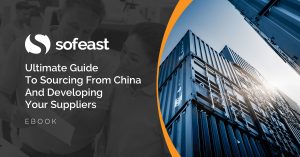Yahoo Finance recently ran an article entitled Think you’re buying on Amazon? It’s actually from Alibaba.
A few people in the US noticed that many products they can buy on Amazon.com can also be found on Alibaba.com. Let’s unpack their differences:
- Amazon.com is a B2C marketplace that sells to consumers. Very often, products are bought 1 at a time.
- Alibaba.com is a B2B directory that serves as advertising to manufacturers and trading companies. I would guess the average order is in the thousands of USD and includes hundreds of units.
- AliExpress is a marketplace where smaller quantities can actually be purchased. Some individuals in the US have bought out of Aliexpress — for example, drone enthusiasts can buy standard electronic components at a low price (and with a relatively high risk, too) — but it doesn’t compete with Amazon in any meaningful way.
So, what happens? How are some of the products identical?
- Some companies buy a batch of products that are already made by a Chinese factory, and that are displayed in their Alibaba ‘virtual showroom’. They don’t ask for any change on that product, or for small changes (color if possible, a silkscreen logo, etc.). This is fast and easy for both parties.
- Those companies have a “Fulfillment By Amazon” (FBA) account. The goods are shipped directly to an Amazon warehouse, and then are sent to Amazon customers.
- All the marketing elements that are “around” the product are usually different when the goods are sold through Amazon — the description copy, the packaging (sometimes), a logo on the product (sometimes), and so on.
Is it a problem? No, as long as those products fulfill their intended function (e.g. the knives must be sharp and durable, the T-shirt must have a nice workmanship, and the torchlight must function) and comply with the importing country’s regulatory standards.
The reporter quoted me on this topic:
Who is actually responsible for making sure products are in compliance with American standards in the Amazon’s FBA model is a gray area that has not been clarified yet,” Renaud Anjoran, president at China Manufacturing Consultants, told Yahoo Finance. “Consumers can easily tell if the product works by trying it, but it’s not like they would pay to test if it’s in compliance with standards.
That’s a key issue that seems to have caught nobody’s attention so far. How long can it last? The amount of business done on the FBA model has grown enormously over the past few years.
If I were selling on Amazon, I would be cautious and I would try to get my ducks in a row…
Ultimate Guide To Sourcing From China And Developing Your Suppliers [eBook]
This FREE eBook starts from the beginning, discussing whether you need to hire a sourcing agent, and follows the sourcing process right through to developing a trusted supplier’s quality and productivity.
There are 15 chapters over 80+ pages to explore, providing exhaustive guidance on the entire sourcing and supplier development process from start to finish, including:
- Identifying suppliers,
- Negotiations,
- Quality inspections,
- Developing Chinese suppliers,
- Improving factory quality and productivity,
- and much more…



Good post.
When it comes to responsibility, the law us clear – at least in the US and EU.
The importer is responsible. Not foreign suppliers (for example those in Asia).
Amazon.com sent out emails just a week or two ago, further clarifying their compliance requirements and how they will step up enforcement.
Then again, it’s more complex in B2C cross border trade. Then product regulations cannot be enforced, as the supplier is not within the country – and the importer is the consumer.
I doubt Washington or Brussels will ever dare to do something about it, as it would look like protectionism.
I recently read a report that around 20% of all phone chargers sold in Scandinavia are technically non-compliant, and this is probably the case for all of the EU, and growing.
Yes the law is clear and its application is not always clear, exactly. 🙂
Yes, but only for B2C transactions.
When it comes to products that are imported for commercial purposes, the authorities enforce regulations in many ways. For example:
1. The customs cooperate with product safety government bodies to request documentation at the border / ports – and if the importer have none, it is sent for immediate destruction. They would never make an exception or anything like that.
2. They purchase sample products from online stores to check labels and make initial tests. If failed, and no technical file, the owner will be investigated.
3. The EU fines importers based on lack of documentation. The fine is “by default” and then the importer can appeal… but if there was no technical file start with, it is game over.
In the US, there are recalls every single day. The CPSC is relentless. So when it comes to enforcement, it is pretty clear – but this is again for commercial imports.
As you say, it is harder to enforce when it comes to cross border B2C transactions.
Yes, very nice summary of the situation. Thanks Fredrik.
Keep it up Renaud. The world needs to know 🙂